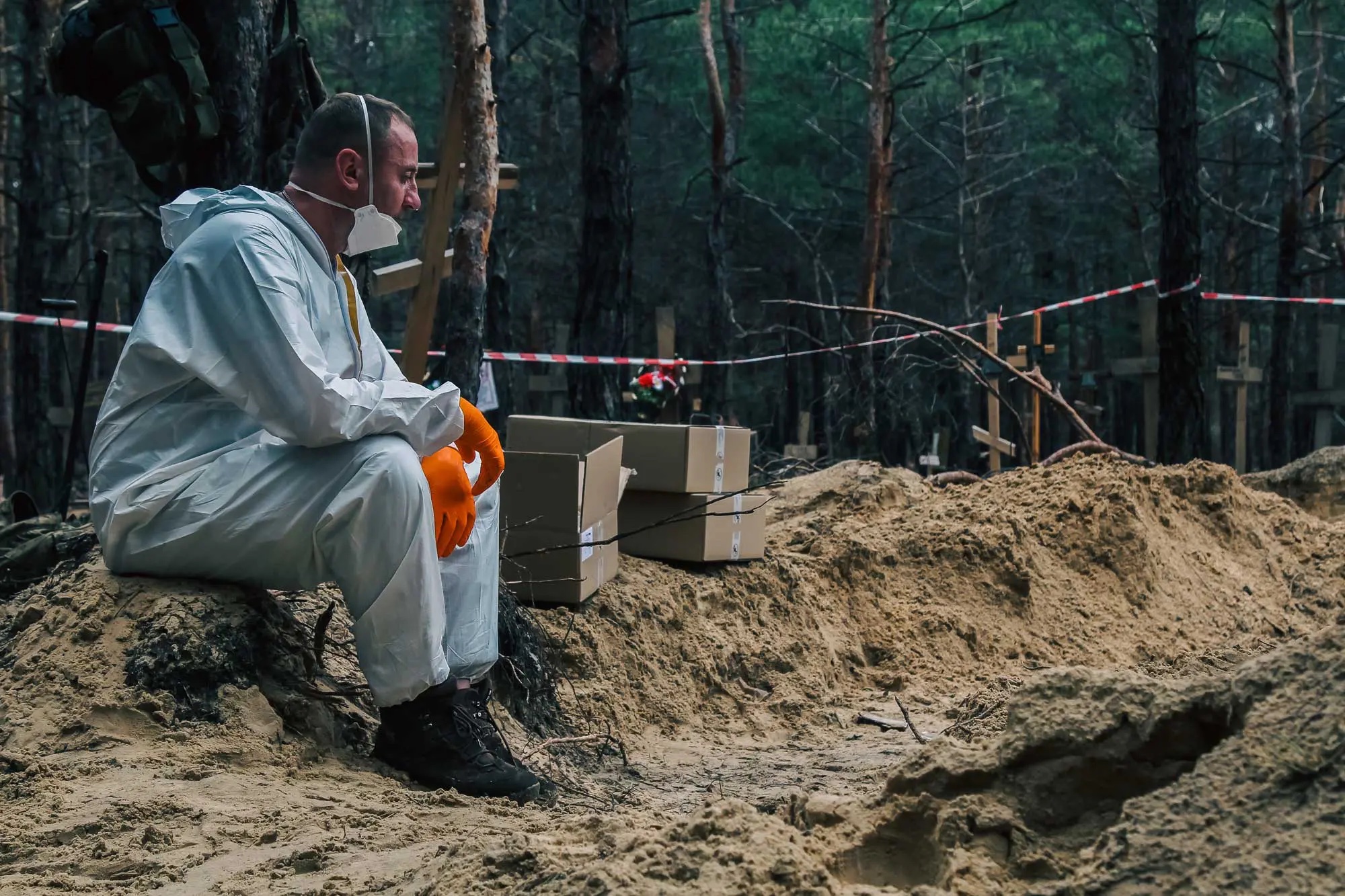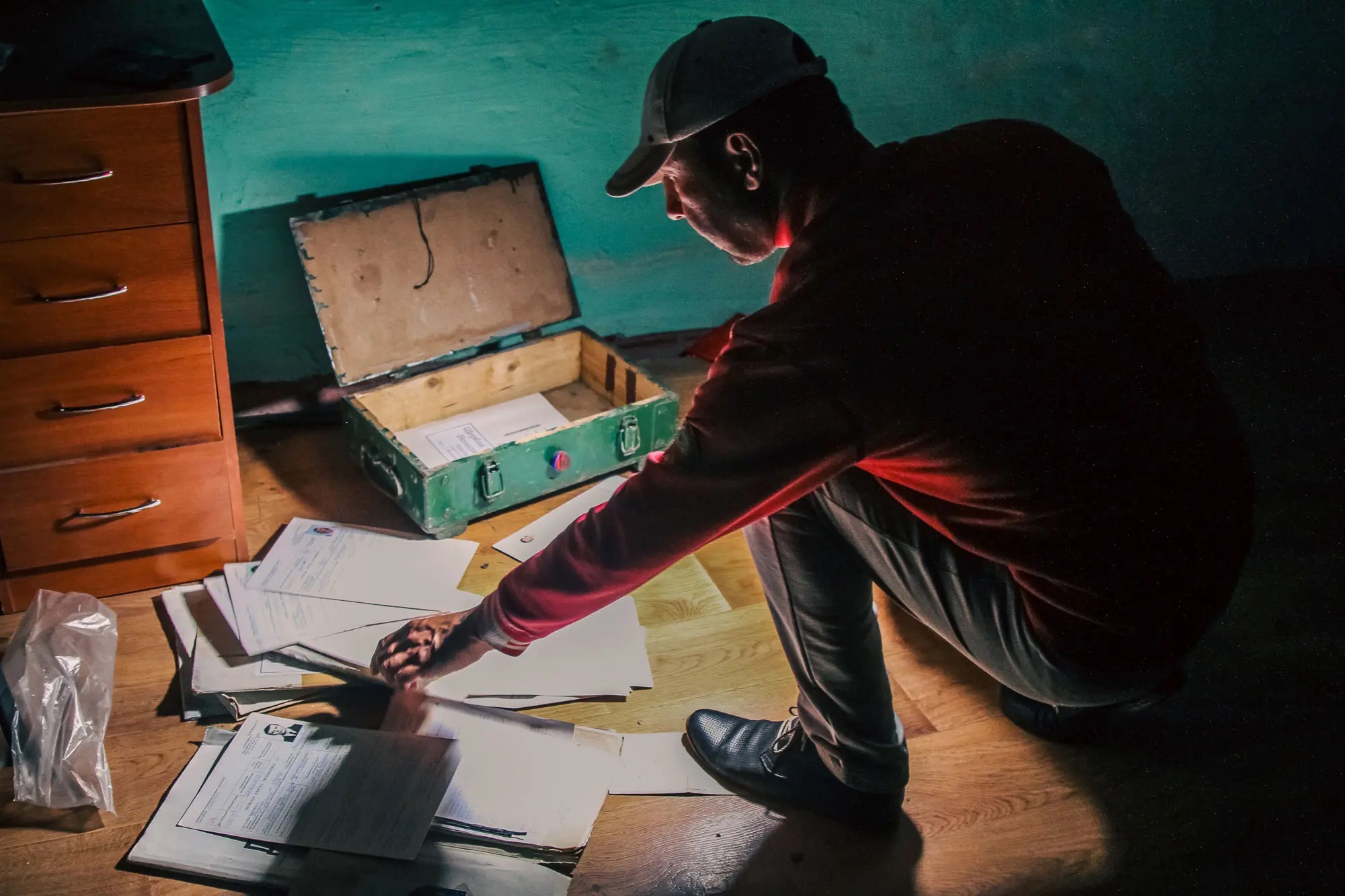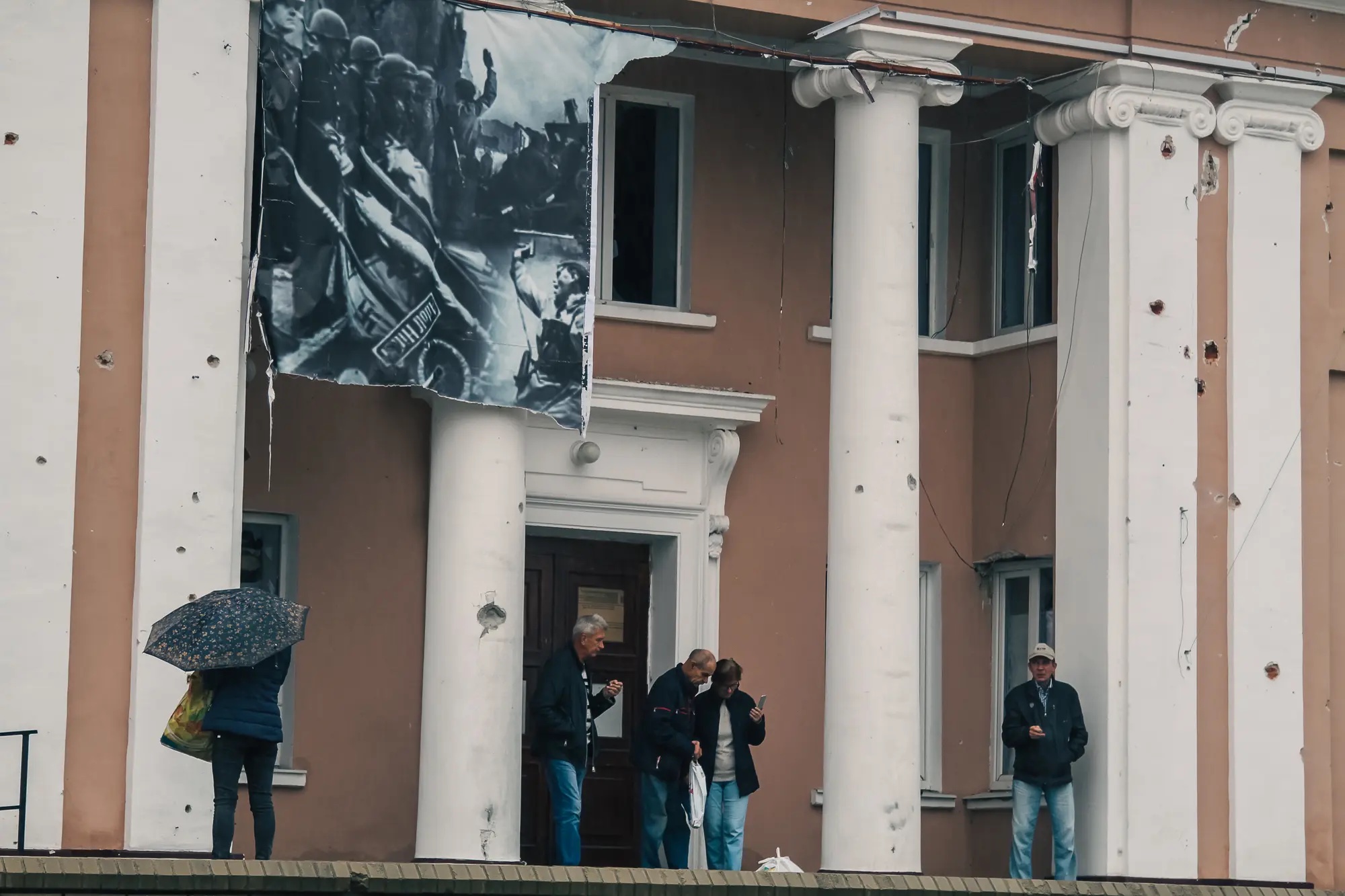Ganna Sokolova, writing for Zaborona, went to Balakliia and Kozacha Lopan, villages north of the Kharkiv region, where she met women returning home and men who were tortured and survived the occupation; she also witnessed the exhumation of the mass grave in Izium, a large city in the southeast of the Kharkiv region.
In Izium, Sokolova met Serhii Chernyak, who had remained at home with his wife during the occupation. Since there was no communication due to blown-up bridges, people had to rely on the supplies they had on hand. Russians entered the houses, he recalls, and took refrigerators, gas stoves, and even toilets as they withdrew.
Serhii and his neighbors heard shooting in the forest. Later they learned that a cemetery was growing in the woods, with eventually 445 graves.
“[T]he burial was handled by an employee of the local ritual service named Vitaly. He collected the bodies of civilians killed during the shelling around the city, and with the permission of the Russians, he buried them in the forest. A man placed a wooden cross on each grave, on which he wrote numbers. Under the first number lie those who died on March 3, under number 445—those who died on 15 September, already after the liberation of Izium. Sometimes several people are buried under the same number. More often—one person. About 20 bodies have bullet wounds.
Vitaly kept a notebook in which he deciphered the numbers — he indicated the data of the dead and the date of death if he knew them. The man gave this notebook to the investigators who came to exhume the mass burial on 16 September,” writes Sokolova.

Later, it was discovered that one of the victims in this mass grave was Volodymyr Vakulenko, a children’s writer, who was tortured and found with two bullets in his body.
There were numerous bodies of tortured people, and even entire families buried in the same mass grave.
Maksym Maksymov, a resident of Izium, publicist, and contributor to Ukrainian publications, was also tortured, but he survived. “It is extreme pain. You start to spin. You are trying to free yourself somehow. I asked my cellmates how long I was gone. They said 40 minutes. I think I kept going for 15 minutes, and then I just blacked out.”
In Balakliia, Sokolova met Kateryna and her son Volodymyr Strygunenko, a judge in the local court. Volodymyr took the journalist to the basement where 70 residents found shelter but then came under siege from Russian forces. “Every office and courtroom was robbed. Not a single glass cage was left for the arrested—the Russians transported them to torture chambers, which they set up in the buildings of the district police department and the printing office.”

In June, Volodymyr had a bag pulled over his head and was brought to the court. “I had fresh blood stains under my feet. That’s how they set me up for a productive conversation. The main task was to encourage cooperation. They offered to work in court with them. I refused and said that I am a Ukrainian judge.”
The full stories of these people and more are available in the Ukrainian original version here and in English translation here.
Photo Credit: Ganna Sokolova / Zaborona

